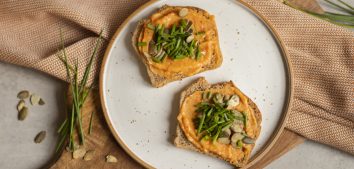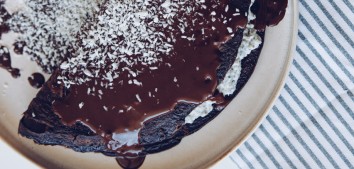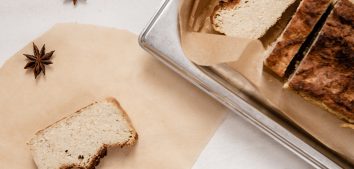
Diet vs Anemia
Did you know that iron deficiency is one of the most common deficiencies, affecting up to 30% of the world’s population (mainly women)? Iron is a very important mineral. Its insufficient consumption and/or absorption may cause many unpleasant symptoms that make everyday functioning difficult. If you want to find out what to do to improve the absorption of iron from your diet, read on 🙂
Iron – an essential ingredient
Most people are aware that the role of iron is related to the process of cellular respiration. But that’s not all! Iron is necessary, among others, for the formation of red blood cells (erythrocytes), DNA synthesis, and the proper course of enzymatic and immune processes. The vast majority of iron in the body is bound to hemoglobin, which gives blood its characteristic red color. The symptoms of iron deficiency include:
- general weakness;
- quick fatigue;
- problems with concentration;
- heart rhythm disturbances;
- pale skin;
- inflammation in the corners of the mouth;
- excessive hair loss and brittleness;
- increased susceptibility to infections.
The recommended intake for iron varies depending on the developmental period. Children need more of it during puberty (which is associated with the pubertal growth spurt and the beginning of menstruation in girls). Pregnant women should pay attention to iron as the demand during pregnancy increases from 18 to 27mg per day. The recommended intake for adult men is 10mg per day. In turn, in postmenopausal women, the requirement drops from 18 to 10 mg.
Sources of Iron in the Diet
Iron is present in many products of animal and plant origin but there are significant differences in the degree of its absorption. Plant-based products (legumes, parsley, green leafy vegetables, cereal products) provide the so-called non-heme iron which is much less absorbable than heme iron, present in animal products (offal, red meat, eggs, fish, seafood). In one of the reviews from 2022, researchers reported that the degree of iron absorption in the case of offal is 25-30%, for green leafy vegetables it is only 7-9%, and for dry legume seeds – only 2%.
As you can see, the differences are significant. Moreover, individual factors (e.g. health conditions) should be taken into account since they may adversely affect the absorption of iron or result in an increased demand for this mineral.
What Inhibits Iron Absorption?
First, let’s focus on a few slightly complicated names: phytates, oxalates and polyphenols. These are natural plant components that combine with iron, forming complexes that hinder the digestion and absorption of iron. Phytates and polyphenols are present in many products: cereals, vegetables, red wine, coffee, tea, cocoa. However, it is important to note that in addition to hindering the absorption of iron, they have many beneficial effects (they are antioxidants, regulate glycemia, lower triglycerides and cholesterol levels). Another inhibitor is calcium, which hampers the absorption of both non-heme and heme iron. The sources of calcium in the daily diet are primarily dairy products. Here, it is also worth remembering that calcium is, after all, a very important component of the diet, necessary, among other things, for the proper functioning of muscles and bone development.
Do we need to cut out the products that are the source of phytates, polyphenols and calcium? You certainly shouldn’t avoid them and, as always, you have to find some middle ground. However, it would be a good idea to focus on what you can do to improve the efficiency of iron absorption.

Vitamin C — Iron’s Best Friend
Vitamin C, or ascorbic acid, increases the absorption of non-heme iron through the ability to form soluble chelates with iron and reduce oxidation to a form that is easily absorbed in intestinal cells. Importantly, this effect is only observed when vitamin C is consumed simultaneously with iron (in the same meal).
Gastric acid has a similar effect, enabling the reduction of non-heme iron to a form that is easily absorbed in the intestines. People taking proton pump inhibitors (commonly used, e.g. in the treatment of reflux) should monitor their iron levels. The same applies to those of you who have had gastritis, Helicobacter pylori infection, or suffer from inflammatory bowel diseases.
Iron in the Diet – Practical Tips
You already know what factors affect the absorption of iron. Let me give you some advice on what is most important – a handful of practical tips that will help you ensure effective iron absorption 🙂
- Do not drink coffee or tea with your meals – this will reduce the adverse effects of polyphenols, you can drink water with your meal instead;
- Remember about the sources of vitamin C – try to include fresh fruit and vegetables in your meals as often as possible as they are rich in vitamin C (red peppers, parsley, kiwi, strawberries);
- Do annual blood tests that measure iron-related parameters – and always consult their results with your doctor;
- If you have problems with recurrent anemia, contact a specialist to extend the diagnostics – perhaps the problem is caused by inflammation in the digestive tract (e.g. the gastric mucosa), which causes the anemia to recur;
- In justified cases, consider supplementation – e.g. if you follow a vegetarian or vegan diet, which is based on plant products that are a source of less absorbable non-heme iron, or if you regularly do intense training, which may increase your demand for this ingredient. I also encourage you to take a look at Levann’s supplement offer HERE.
Bibliography:
- Kumar A, Sharma E, Marley A, Samaan MA, BrookesIron MJ. Iron deficiency anaemia: pathophysiology, assessment, practical management. BMJ Open Gastroenterol. 2022 Jan;9(1):e000759. doi: 10.1136/bmjgast-2021-000759.
- Normy żywienia dla populacji Polski i ich zastosowanie. NIZP-PZH, Warszawa 2020.
- Piskin E, Cianciosi D, Gulec S, Tomas M, Capanoglu E. Iron Absorption: Factors, Limitations, and Improvement Methods. ACS Omega. 2022 Jun 10;7(24):20441-20456. doi: 10.1021/acsomega.2c01833.










Comments No Comments
Join the discussion…